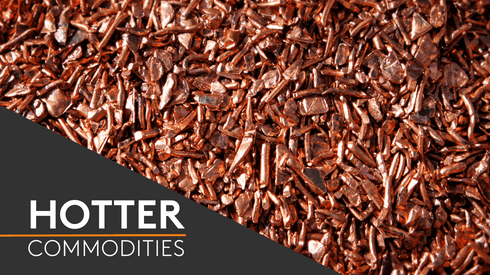This brought full-year production for 2017 to 8.89 million tonnes, representing an increase of 7.7% year on year from 8.44 million tonnes previously, NBS data showed.
Last month’s total was 16.7% higher on an annual basis, and surpassed the previous monthly high of 833,000 tonnes, which was achieved in December 2014.
Copper output is typically higher in the fourth quarter of the year with smelters ramping up production to achieve their annual targets, while higher copper prices and fewer maintenance activities taking place last month are believed to be behind the record-high output seen during the month.
Supported by improvements in major global economies, such as Europe, as well as optimism over the prospects for the red metal’s use in electric vehicles, copper prices rallied during the final month of 2017.
The three-month copper contract on the London Metal Exchange climbed for 15 consecutive days from December 6-28, with prices reaching a four-year high of $7,213.5 per tonne on December 28.
Fewer maintenance activities taking place during the month also contributed to the higher output seen in December 2017.
During 2017, most Chinese copper smelters completed their maintenance activities during the first half of the year, especially during the year’s first quarter, when treatment and refining charges (TC/RCs) were dragged lower in response to record-long strikes at large copper mines like Escondida. In response, some smelters moved forward their maintenance plans for the year to offset supply tightness and purchasing pressure.
In December, the market had expected the supply of copper concentrates to tighten in 2018 and 2019 which saw spot TC/RCs fall during the month, however this did not affect smelters’ production as they were well prepared for the negotiation season and had sufficiently stocked the raw material ahead of December.
Metal Bulletin’s copper concentrates index slipped to $79.8 per tonne and 7.98 cents per lb on December 29, down from $85.4/8.54 cents at the end of November.
Rising domestic smelting capacity and therefore output has also resulted in fewer imports of refined copper entering China in recent years.
China imported 4.69 million tonnes of unwrought copper in 2017, down by 5.7% from a year ago, according to Chinese customs data.
Meanwhile, imports of copper concentrates and raw materials for refined copper production were higher, with imports of these materials rising by 2.3% year on year to 17.35 million tonnes in 2017.
Copper products output
China produced 1.66 million tonnes of copper products in December 2017, up by 3.7% on an annual basis, according to NBS data.
This brought total output for these products last year to 18.62 million tonnes, representing a year-on-year increase of 6.9%.




